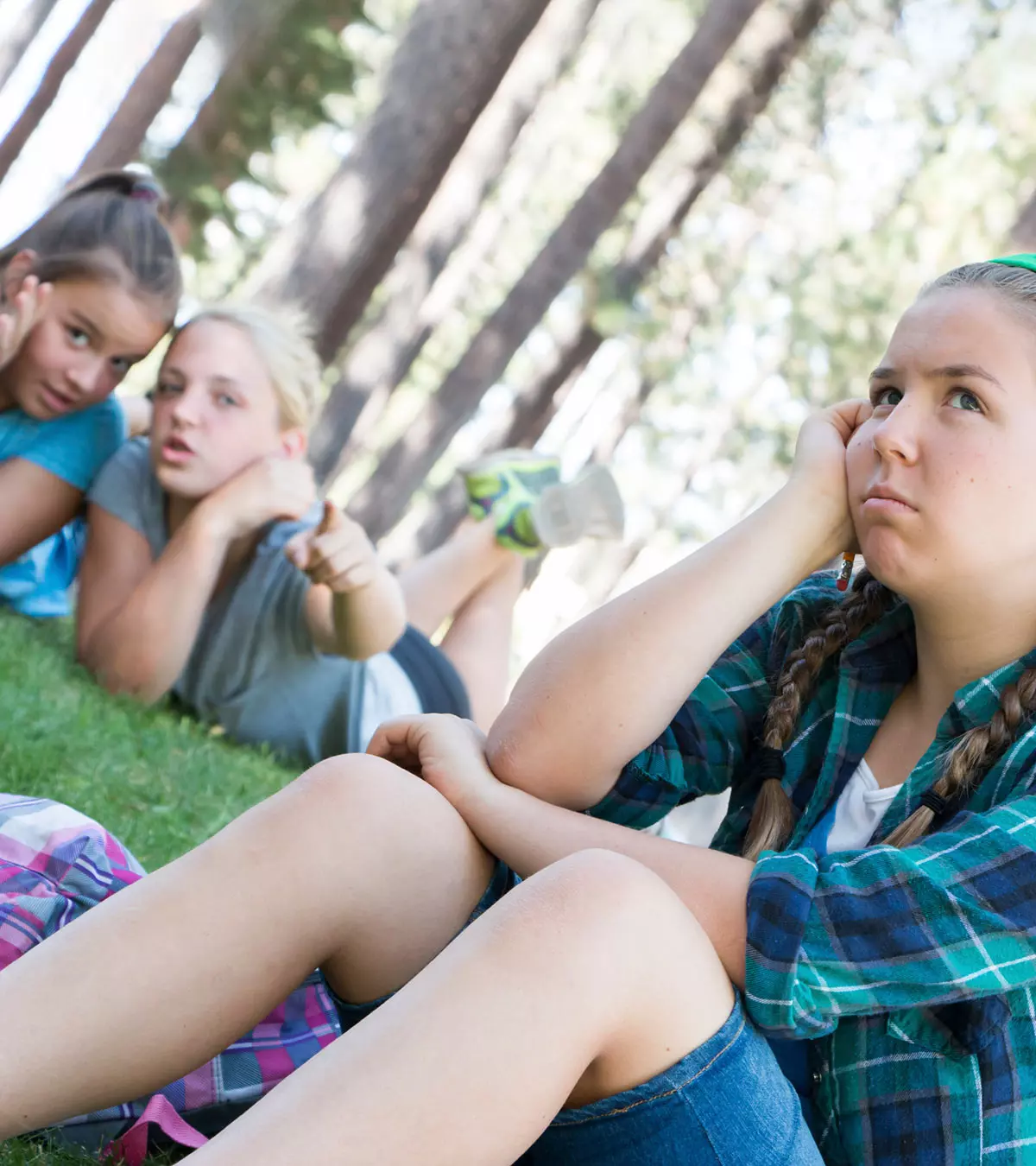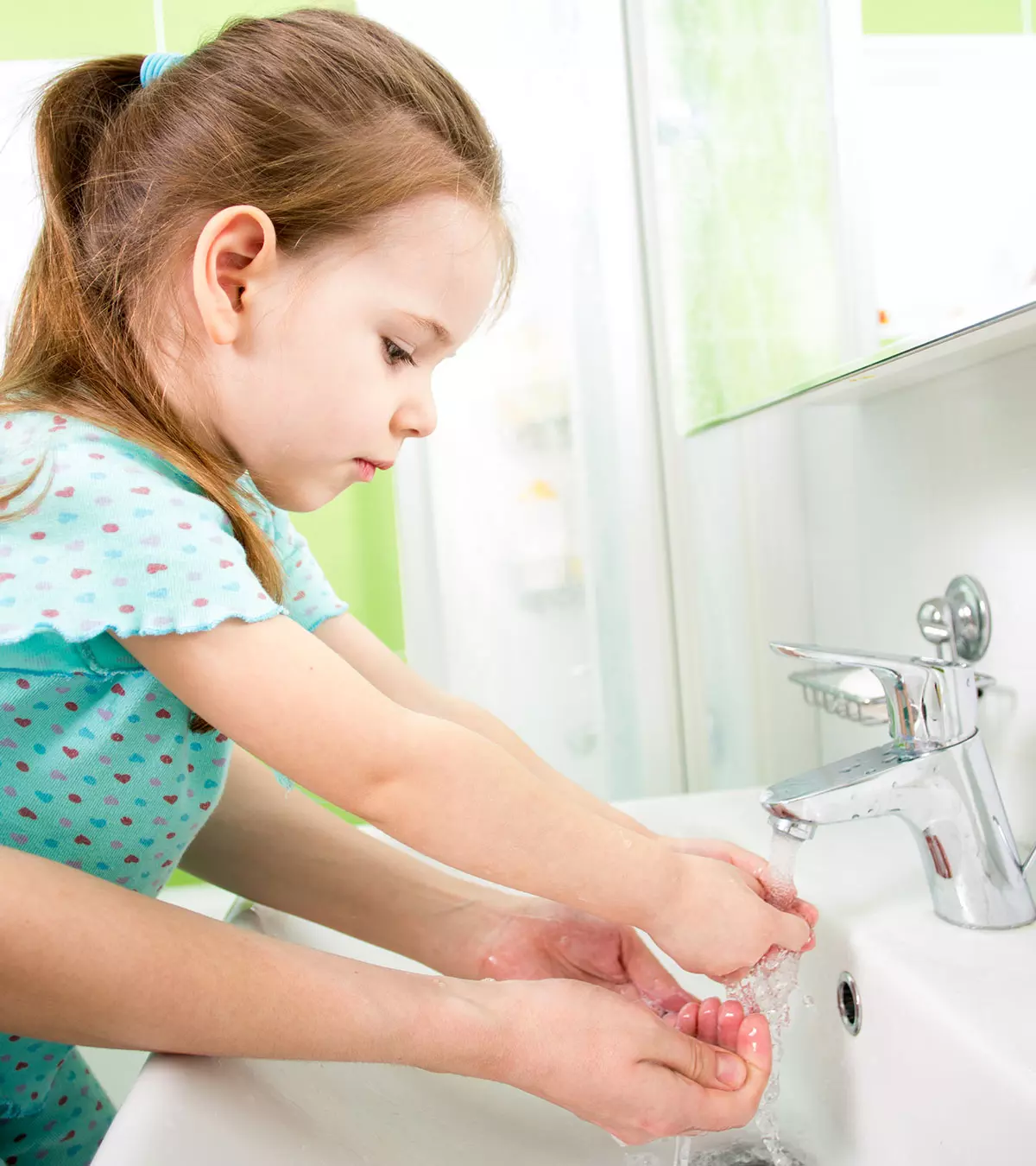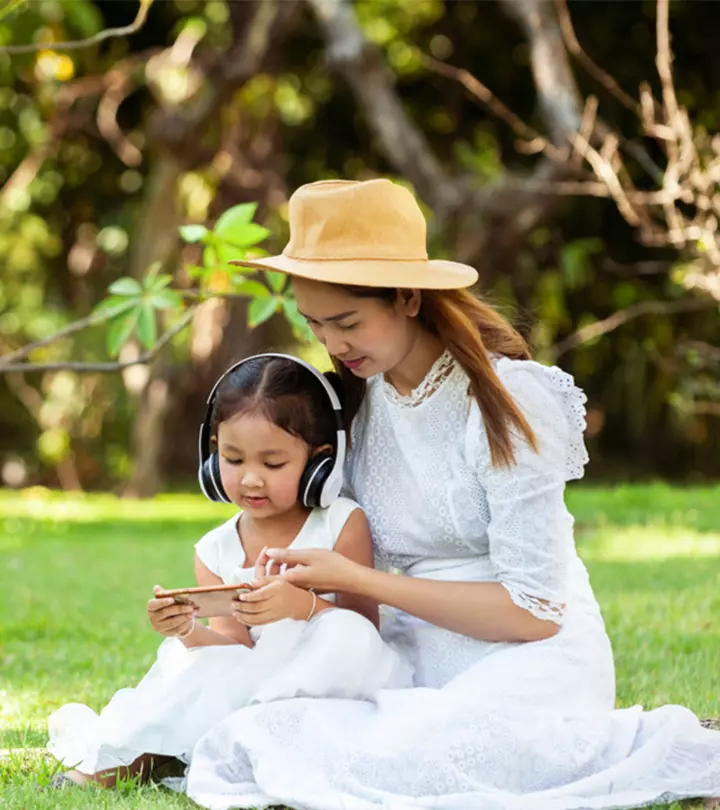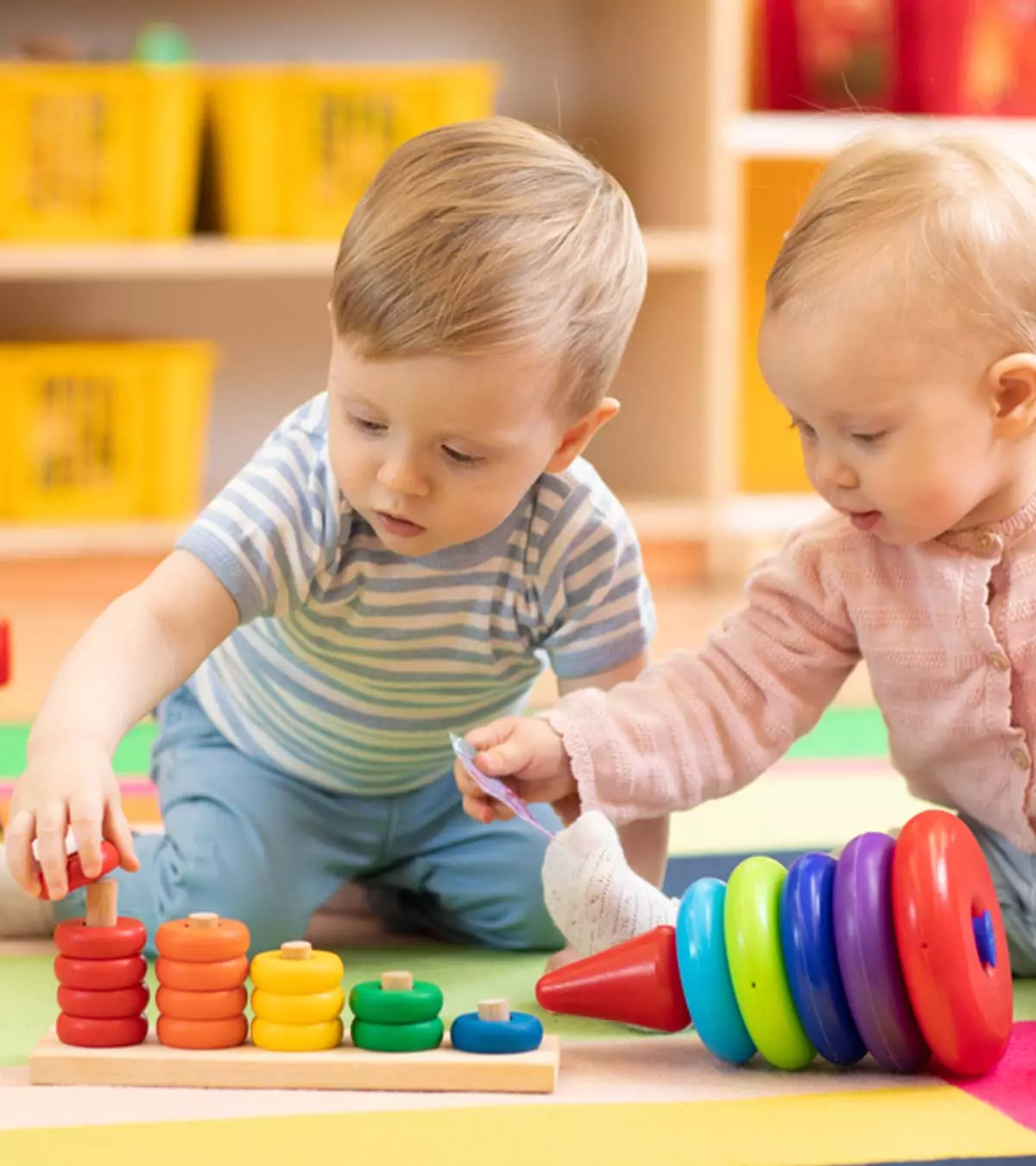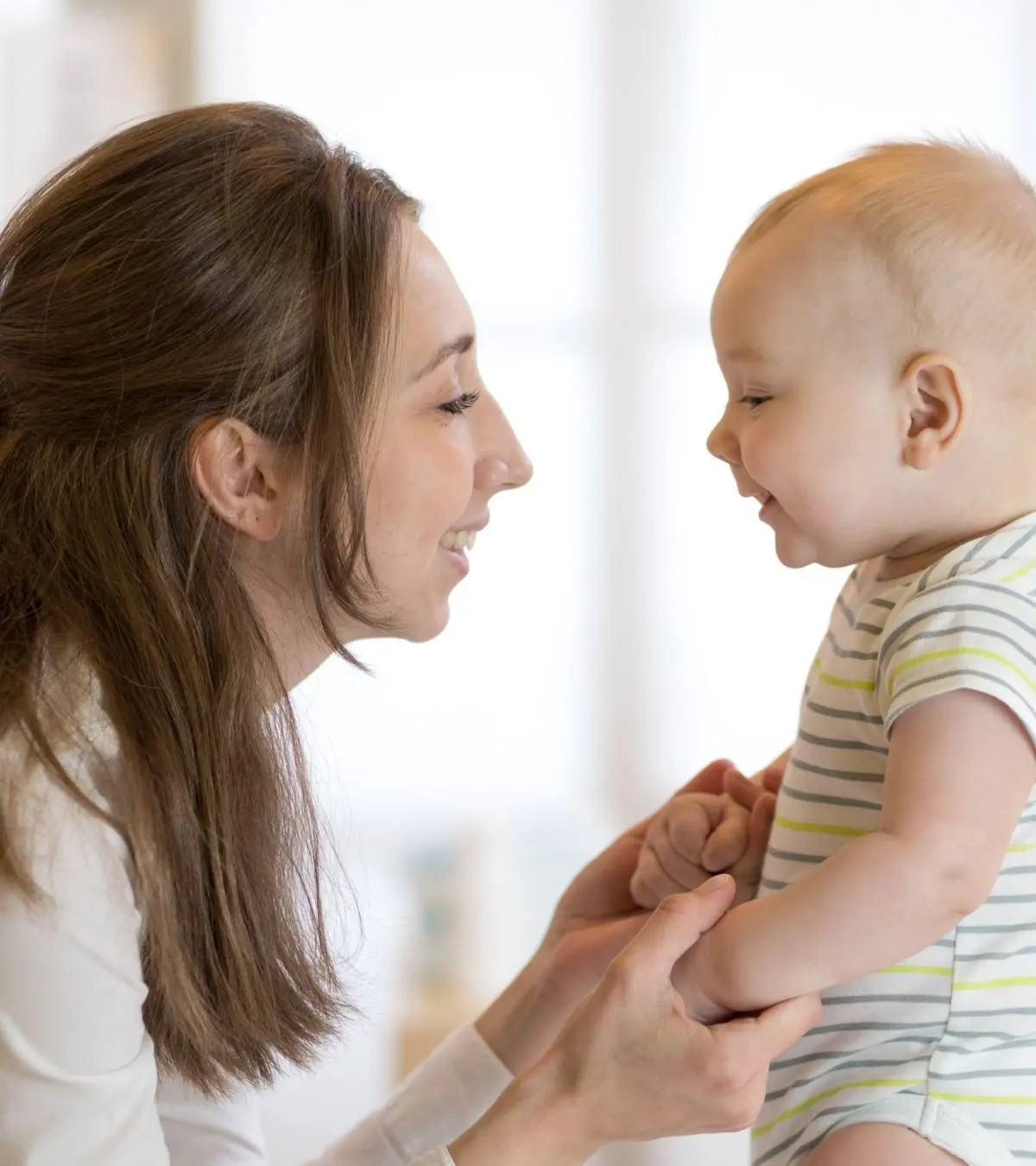
Image: ShutterStock
Pushing a friend because they took a bite from their food bowl, hitting someone because they touched their toys, biting someone because they did not know how to vent their anger— are common among young children. Self-control for kids is an essential part of development.

Children do not develop self-control until they reach three to four years. Moreover, self-control is not an innate skill, and children must develop it with your help (1).
Children who lack self-control may often fall behind in their social lives and careers when they grow older. Let’s delve deeper into the what, why, and how of self-control in children in this post.
Key Pointers
- Self-control does not develop in children until they are three to four years old.
- Throwing tantrums, having random outbursts, and impatience are signs of a lack of self-control.
- Altering their thinking, modifying responses, and other ways to teach self-control to your children as you scroll through.
What Is Self-Control, And Why Should Kids Develop It?
Self-control is a skill that enables children and adults to practice restraint by managing their thoughts, emotions, feelings, and actions and not acting on their impulses. Some examples of self-control in children include
- Waiting for their turn in a line
- Sitting still in an auditorium while a performance is going on
- Not throwing temper tantrums when they do not get something they desire
We develop self-control as we grow older. Children have limited self-control since the part of the brain responsible for emotional control is still under-developed until the age of three. This is why toddlers may exhibit stubborn behavior, throw tantrums without thinking about the consequences, and often fail to understand a situation.
Developing self-control helps children make friends, build relationships, and find their way through life. Conversely, children who fail to acquire self-control can often struggle to form healthy and robust social bonds, find a life partner, and lead a happy and fulfilled life (2).
What Are The Types Of Self-Control?
There are broadly three types of self control (3):
- Emotional control that involves how children manage anger or frustration or calm themselves after a stressful situation
- Impulse control which determines whether children will learn not to react on every impulse. For example, overcoming the impulse of grabbing a toy from someone else.
- Planning and functioning ability that makes children capable of thinking ahead of their action or executing an action with complete focus.
Why Do Some Children Struggle With Developing Self-Control?
Infants and toddlers constantly explore the world around them and are just developing a sense of individuality and independence. Even though children begin developing self-control around three to four years of age, they need guidance and help to control, regulate, and channel their emotions appropriately. Moreover, no two children are the same, and some may struggle with self-regulation even as they grow up for the following reasons (2) (4).
- Some children are unable to soothe or calm themselves and tend to face issues with self-control as they grow older.
- A child’s innate temperament also plays a role in how they develop self-control.
- Children with ADHD (Attention Deficit Hyperactivity Disorder) and anxiety syndrome may find it challenging to regulate their emotions and develop self-control (5).
Signs Of Lack Of Self-Control In Kids
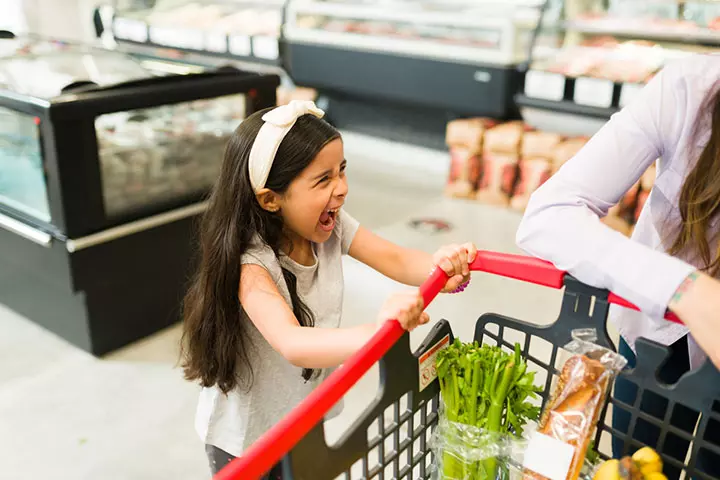
Children who struggle to maintain self-control may often find themselves alienated from their peers and friends. Some problematic signs that children with poor self-control demonstrate include (2)
- Having random and frequent outbursts
- Throwing tantrums
- Interrupting friends in class
- Blurting out of turn in class
- Non-stop talking
- Being restless or excessively active
- Getting frustrated quickly and giving up
- Finding it difficult to await their turn
- Interfering in people’s conversations
- Impatience
- Inability to handle teasing, humor, or joke and ending up in tears
- Inability to take criticism
- Inability to delay gratification
How To Help Children Develop Self-Control?
Self-control and self-awareness for kids are extremely crucial. As a parent, you must ensure that your child develops and learns self-awareness and self-control as they are growing up. Children with limited self-control often find themselves in socially embarrassing situations, which further impact their self-esteem, self-respect, and also self-confidence in the long run. Here are some ways you can help your child develop self-control (6).
1. Alter their thinking
A useful way to encourage your child to develop self-control is to change the way they think about a situation. Repeating instructions or giving them gentle and timely reminders before they face a difficult situation is a good way to prepare them for it mentally.
For example, if your child loses their cool when someone teases them in school, you can repeat instructions, such as “What do we do when someone teases you?” This way, your child is prepared for it. Another way to develop self-control in your child is to ask them for a solution to a problem. For example, asking them, “How do you want to solve the problem?” can keep them thinking and enable them to come up with creative solutions.
2. Help them understand their emotions
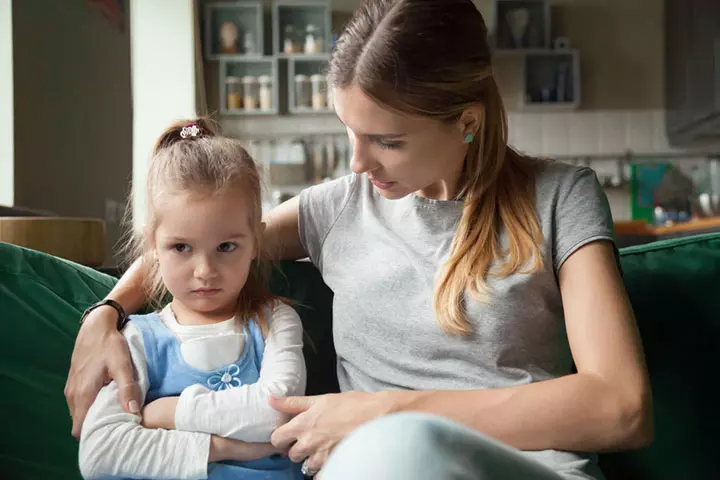
Young children often lack empathy and self-control and usually throw tantrums and don’t listen to you. It can be overwhelming for you, but you must understand that your child is trying to get a grip on everything around them.
They may be navigating multiple emotions and could be unable to communicate what they are going through, thereby leading to their irate behavior. Teach them words that can help them express their feelings and emotions better to help them develop self-control.
 Quick tip
Quick tip3. Modify their response
A good way to teach your child self-control is to help them understand how to modify their response to a complex or frustrating situation. Suggest actions or activities that they can do instead of lashing out or losing their self-control. For instance, teach young children to cross their arms when they get angry to hug themselves or teach a school-going child to say, “So what?”, “Was that funny?” etc., to cope with bullying or teasing at school without taking it to heart.
Another useful way to modify your child’s response is by teaching them to distract themselves by counting the tiles, counting numbers backward, drawing, playing an instrument, painting, etc.
4. Set fixed rules with consequences
Children may find it challenging to follow the rules when they are young. However, it is still important to set rules and consequences. For example, you can tell your child,“Do not throw the toy, or you will not be able to play with it until tomorrow.” If your child does not abide by the rule, they face the consequence. After a few repetitions, your child will learn to follow the rules and gradually develop self-control.
5. Be a good role model
Children watch their parents and elders and imbibe their actions, words, and behavior. It may be a good idea to point out your own mistakes and demonstrate how you practice self-control. You could say, “I need some time to cool off because I am angry,” and then spend time alone in your room. Your child will pick up on such positive behavior and model it when they feel angry or frustrated. Also, teach them to respect others.
6. Use positive reinforcement
A good way to teach children to develop self-control is by using positive reinforcement. Give your child a reward or a bonus for the times they show determination for self-control under challenging situations. These reinforcements and rewards can act as motivators and encourage your child to practice restraint. This gradually becomes a part of their nature.
7. Implement time-outs
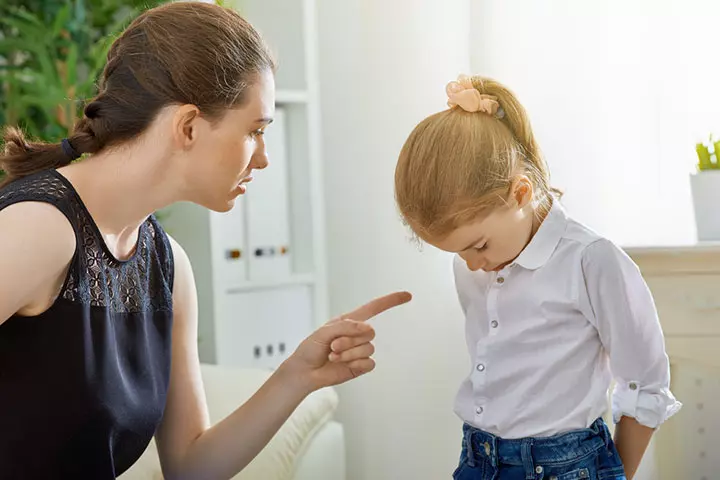
Time-outs are an effective tactic to help young children develop self-control and obedience. Give them a time-out when they do not obey instructions repeatedly. Keep the time-out short. You can set aside a ‘naughty stair’ or a ‘naughty chair’ and make your child sit on it as part of their time-out. You could also cut down their playtime or assign them chores for their irregular behavior.
 Point to consider
Point to consider8. Talk them through
Many young children become volatile or lose control because they cannot vent out their feelings and emotions safely. If you notice your child losing self-control in a situation, talk to them. Instill trust and cooperation in them and let them know that you are always there for them if they need to discuss a problem. Not knowing whom to approach can be why your child loses self-control. So, always keep the communication channels open.
If your child is old enough to understand things and yet is struggling to develop self-control, you can encourage them to think about what is causing them to react to a frustrating situation in a certain way. Teach them to think about why they are angry before responding to any situation, and compliment them when they practice restraint.
Childhood self-control is largely linked to happiness and satisfaction in life. According to the Dunedin Study, individuals who exercised self-control in childhood were more satisfied than those who lacked self-restraint. High self-control has even helped protect individuals from suicide, a major indicator of unhappiness.
Self Control Activities For Children
There are plenty of fun activities and games that you can play with your child to help them develop self-control. Here are a few useful ones you can try.
1. Jenga
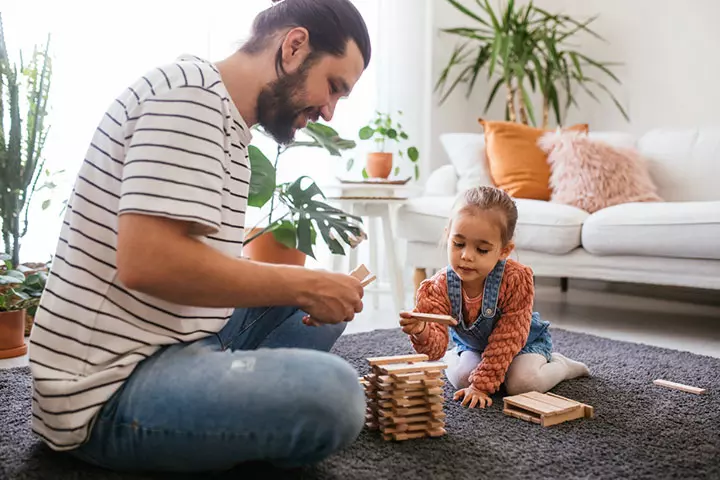
It requires slow and restrained movements and is apt for developing patience and self-control.
How to play:
The game consists of a tower that is built with blocks. The aim of the game is to pull out blocks from the bottom layers to create new layers on top without letting the tower fall.
- Set up and straighten the tower.
- Everyone gathers around the tower and takes turns to pull out blocks from the bottom layers and align them on the topmost layer.
- As the game proceeds, the tower becomes wobbly.
- The player in whose turn the tower collapses loses the game.
- Players can only use one hand at a time.
2. Simon Says
This is a fun game to play with your child. As they follow your instructions in the game, they will learn to be patient and practice self-control.
How to play
- The game requires at least three players.
- One person takes up the role of Simon, while the others are players.
- Simon stands in front of the group and tells players what to do.
- Every task given to the players must begin with “Simon Says…”
- For example, “Simon says touch your nose and hold it for five minutes” or “Simon says jump!”
- When Simon instructs without using the phrase “Simon says…” the players must not obey the order. For example, if Simon says “Jump!” the players should not jump. Those who do are out of the game.
3. Stoplight
Also called Red light green light, this game involves following instructions.
How to play
- You need a minimum of three players for this game.
- One person is designated as the ‘It’ or the traffic light and stands a good distance from the other players with their back facing them.
- When the ‘It’ is called ‘Green Light,’ the players should spin and move towards the ‘It’ until they call it ‘Red Light.’
- On hearing ‘Red Light,’ the players must freeze in their spots.
- Any player who moves is out of the game.
An anonymous blogger and teacher adds a musical twist to this game. It is called ‘Go and Stop’ and is designed to foster self-regulation skills in children within the classroom. Explaining the game, she says, “This is a favorite game for both me and my students, and all you need is some music. Just play whatever music you like and have the students walk or jog around in a circle, but when the music stops, they have to Freeze (or at least stop moving forward). I sometimes do this with a version of the ABC song, but I have to be standing next to the music player to make this activity really work. Other times, I use a song that has a stop/freeze component in it so I can do it with them, and the kids just love it (i)!”
 Quick tip
Quick tip4. Follow the clap pattern

This is a fun and easy group game that needs no props. Your child must follow the clapping rhythm you begin, and each child adds to the clap pattern.
How to play
- You need a minimum of three players for this game.
- The first player starts with a clap.
- The second player begins with the first player’s clap and adds their pattern.
- The third player is expected to start with the first person’s clap, followed by the second person’s clap, and then add their pattern. This continues until one of the players messes up the pattern.
Frequently Asked Questions
1. What are the benefits of self-control for kids?
Self-control for kids not only helps them learn empathy but also helps them develop good academic skills. A study suggests that self-control learnt in childhood can be economically, socially, and health-wise safe and sound (7).
2. At what age is self-control fully developed?
There is no specific age to depict that self-control is fully developed. But it varies according to individual kids and their nature. For example, toddlers or babies will have less self-control than kids older than five to six years, whether it is emotional, motor, or impulse control.
3. What are three types of self-control?
Impulse control, emotional control, and movement control are the types of self control. Impulse control helps individuals resist immediate desires, emotional control allows for the management of emotions, and movement control enables intentional regulation of actions (8).
4. Is self-control genetic or learned?
Both genetics and learned behaviors influence self-control. While some individuals may have a natural inclination for self-control, it is a skill that can be developed and improved through practice, experience, and environmental influences. Therefore, self-control is a combination of innate tendencies and acquired abilities (9).
5. Is self-control linked to intelligence?
Self-control is said to have links to intelligence. Talking to yourself is an effective sign of intelligence and self-control. Engaging in self-talk has been found to have positive effects on wise thinking, managing stress better, and boosting self-confidence, all associated with intelligence. (10)
6. Why is it important to practice self-control consistently?
Consistently practicing self-control is important because it helps develop discipline, resilience, and the ability to make better choices, leading to long-term personal growth, improved decision-making, and the attainment of desired goals. (11)
7. What is the difference between self-control and self-regulation?
When one can regulate their emotions, behavior, and thoughts, it is known as self-control. For example, a child waits till the end of the meal to have dessert. Meanwhile, self-regulation involves understanding the consequences of one’s action and reducing the impact of strong impulses. For example, a child decides not to throw a tantrum if the mother says no to dessert before the meal, as they know that they will not get the dessert at all if they do so (12).
Self-control and self-discipline for kids are essential skills you should teach them from their developing stage or when they display better understanding. If your child is younger than two or three years, you may overlook their erratic behavior–screaming, hitting, or biting to some extent with a bit of discipline. However, a child older than three years should learn not to behave in such a manner. So keep the above tips in mind, inculcate self-control in your children, and teach them to be patient and reasonable rather than acting out. Refrain from opting for punishment for kids as it is not the most ideal solution to this problem.
Infographic: Teaching Self-Control To Children With Books
Reading with pictures and telling a story is a great way to teach a skill to a child. Like most parents, if you are baffled about your child’s tantrums and are tired of giving them instructions, choose from the books listed in this infographic and read them with your children to help them learn self-control skills.
Some thing wrong with infographic shortcode. please verify shortcode syntax
Some thing wrong with illustration image shortcode. please verify shortcode syntax
Join Sarah May on a fun and instructive reading adventure as she masters self-control. This fascinating story teaches essential lessons about impulse control and building self-regulation skills.
Personal Experience: Source
MomJunction articles include first-hand experiences to provide you with better insights through real-life narratives. Here are the sources of personal accounts referenced in this article.
i. Top 5 self-regulation activities: How to teach a 2 year old patience.https://teachenglishtokids.wordpress.com/2014/07/18/self-regulation-how-to-teach-a-2-year-old-patiencekeeping-chaos-a-how-to-teach-a-2-year-old-patience/
References
- Toddlers and Self-Control: A Survival Guide for Parents.
https://www.zerotothree.org/resource/toddlers-and-self-control-a-survival-guide-for-parents - What is Self-Control?
https://www.understood.org/en/articles/en/self-control-what-it-means-for-kids - Young Children Who Learn Self Control Have More Chances for Success.
https://extension.unr.edu/publication.aspx?PubID=2604 - How Can We Help Kids With Emotional Self-Regulation?
https://childmind.org/article/can-help-kids-self-regulation/ - What Causes Trouble With Self-Control.
https://www.understood.org/en/articles/en/learning-and-thinking-differences-that-cause-trouble-with-self-control - Strategies for Teaching Self-Control.
https://confidentparentsconfidentkids.org/2013/01/24/strategies-for-teaching-self-control/ - A gradient of childhood self-control predicts health wealth and public safety.
https://www.pnas.org/doi/abs/10.1073/pnas.1010076108 - The 3 types of self-control.
https://www.understood.org/en/articles/the-3-types-of-self-control - Genetic and Environmental Influences on Self-Control: Assessing Self-Control with the ASEBA Self-Control Scale.
https://www.ncbi.nlm.nih.gov/pmc/articles/PMC5846837/ - The Surprising Sign Of High Intelligence And Self-Control.
https://www.spring.org.uk/2025/09/sign-intelligence.php - The Dark Side of Self-Control.
https://hbr.org/2025/01/the-dark-side-of-self-control
- Self-regulation Vs Self-control: What’s the Difference?
https://childcarestudies.co.uk/blog/self-regulation-vs-self-control-whats-the-difference/ - 13 ways to instill self control in your children.
https://www.parentingwithfocus.org/post/the-1-virtue-to-teach-your-child-self-control - Focus and Self control.
https://www.mindinthemaking.org/focus-and-self-control
Community Experiences
Join the conversation and become a part of our nurturing community! Share your stories, experiences, and insights to connect with fellow parents.
Read full bio of Sadhvi Nishtha Om
Read full bio of Apoorva K
Read full bio of Harshita Makvana
Read full bio of Vidya Tadapatri





